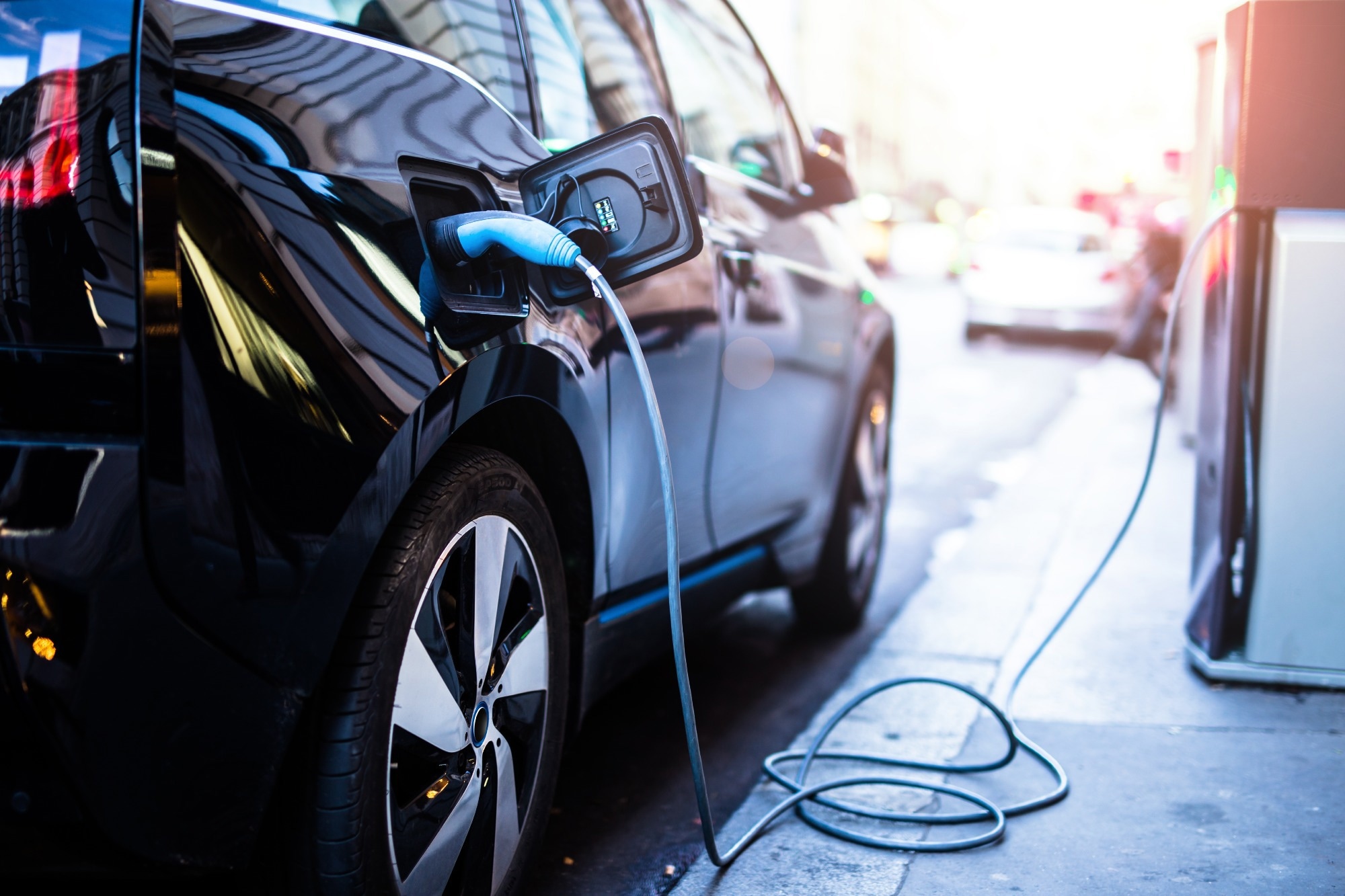As automobile electrification cranks up, the world faces an overwhelming need for critical metals and minerals to make atmosphere-saving electric vehicles possible.

Image Credit: guteksk7/Shutterstock.com
According to new Cornell research published on April 11th, 2023, in Nature Communications, demand for battery-grade lithium, nickel, cobalt, manganese, and platinum will rise sharply as nations work to reduce greenhouse gas emissions through mid-century, but will probably trigger economic snags and supply-chain disruptions.
Electrification and decarbonizing fuel production are critical for adequately mitigating greenhouse gas emissions from road transportation. Improving the efficiency of internal combustion engine vehicles can cut greenhouse gas emissions, but deep decarbonization for the road transportation sector requires electrification and a shift to cleaner energy, such as electricity generated from renewable sources.
Fengqi You, Study Senior Author and Roxanne E. and Michael J. Zak Professor, Energy Systems Engineering, Cornell University
In the new study, You and his colleagues evaluated 48 key countries dedicated to playing a significant role in electrifying transportation, including the United States, China, and India.
Monotonic growth in global demand for critical metals to 2050 is the most prevalent trend. It’s mainly driven by the electric vehicle market penetration and battery technology development.
Fengqi You, Study Senior Author and Roxanne E. and Michael J. Zak Professor, Energy Systems Engineering, Cornell University
If 40% of vehicles become electric by 2050, the worldwide demand for lithium will increase by 2,909% from the level in 2020. If all vehicles are electric by 2050, the demand for lithium will more than double to 7,513%.
In a world where all vehicles are electric, the annual demand for lithium will rise from 747 metric tons to 2.2 million metric tons between 2010 and 2050.
By mid-century, for instance, nickel demand will have surpassed that of other key metals, with global demand ranging from 2 million metric tons in a world where 40% of vehicles are electric to 5.2 million metric tons in a world where all vehicles are electric.
According to the research, annual demand for cobalt (0.3 to 0.8 million metric tons) and manganese (0.2 to 0.5 million metric tons) will increase by the same order of magnitude in 2050.
According to the World Bank, key metals and minerals are currently centralized in politically unstable Congo, Chile, Brazil, Indonesia, Argentina, and South Africa.
The unstable supplies of critical metals and minerals can exacerbate supply risks under surging demand.
Fengqi You, Study Senior Author and Roxanne E. and Michael J. Zak Professor, Energy Systems Engineering, Cornell University
The experts warn against electrifying heavy-duty vehicles, which require more key metals than other vehicles. Despite accounting for only 4% to 11% of the total road fleet in some countries, battery-related critical metals used in heavy-duty electric vehicles will account for 62% of key metal demand in the coming decades.
Some of the experts’ recommendations for addressing this demand are as follows:
- Building a circular economy would be essential for key metals in the future if it reached a closed-loop supply chain. Strategies for increasing the recycling efficiency and recovery rate of end-of-life batteries should be investigated.
- To lessen dependency on key critical metals, countries should prioritize alternate designs for cathodes/anodes and fuel-cell (green hydrogen) systems.
- Road transportation decarbonization targets should be combined with electric vehicle deployment, carbon peak and neutrality timing, and precise emission budgets.
The co-authors are Chunbo Zhang, a Postdoctoral Associate; Xiang Zhao, a Doctoral Student; and Romain Sacchi of the Paul Scherrer Institute, Switzerland. The study was funded by the National Science Foundation.
Journal Reference
Zhang, C., et al. (2023). Trade-off between critical metal requirement and transportation decarbonization in automotive electrification. Nature Communications. doi.org/10.1038/s41467-023-37373-4.